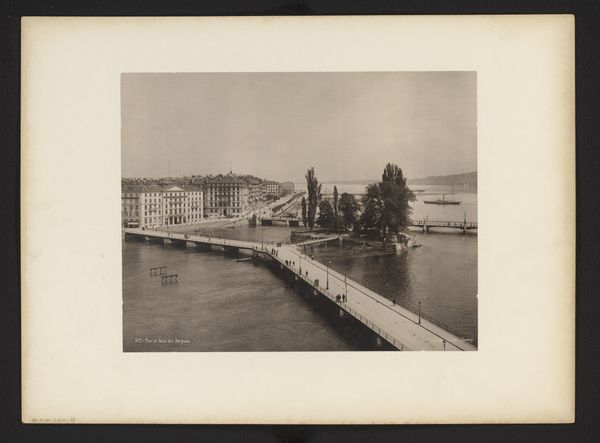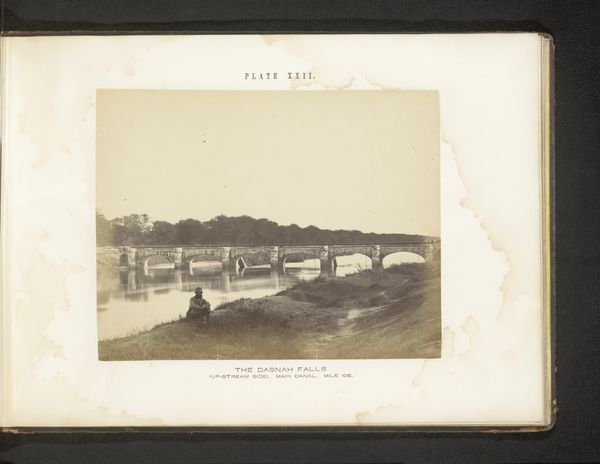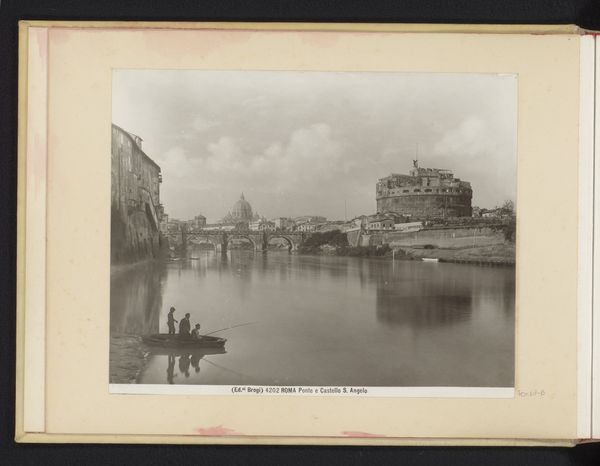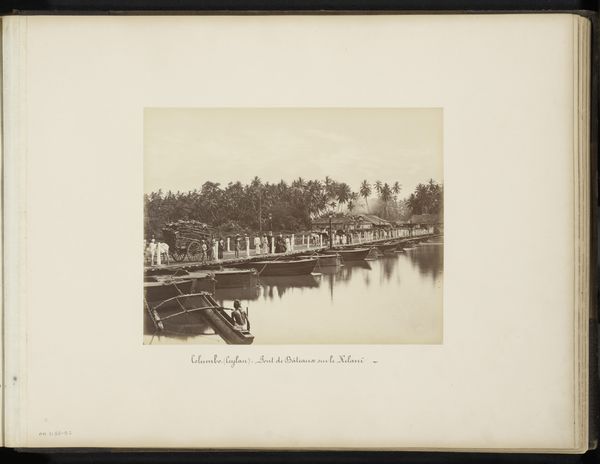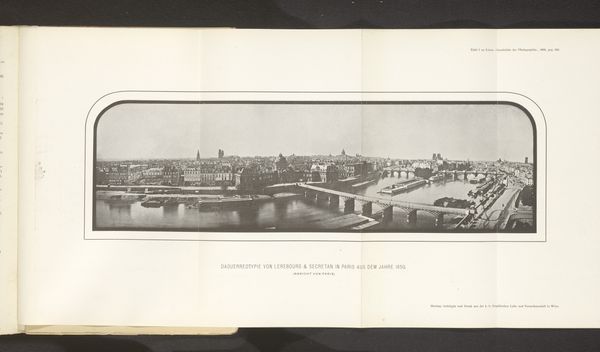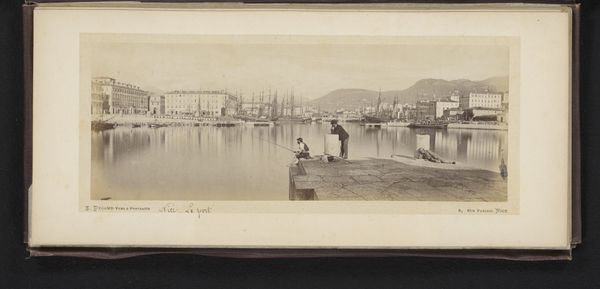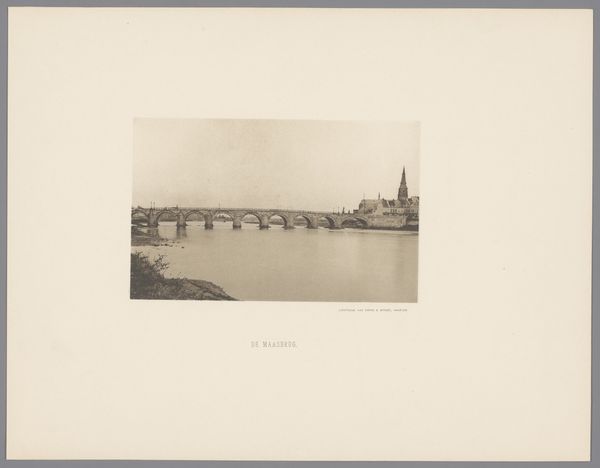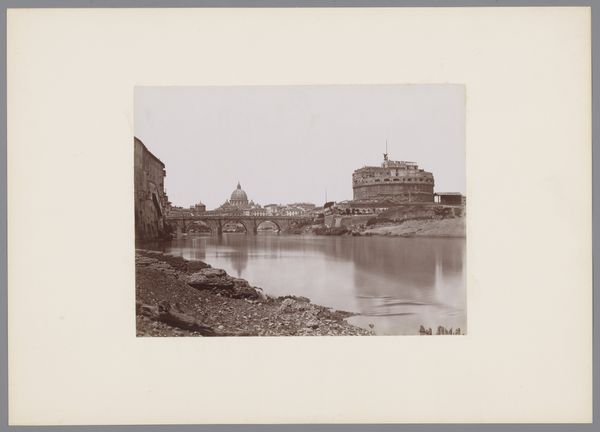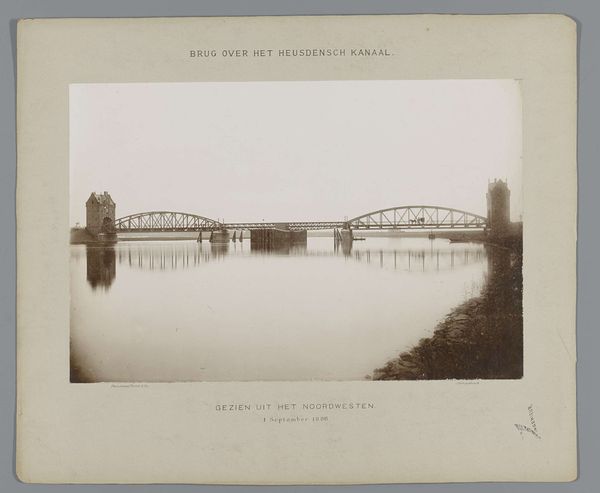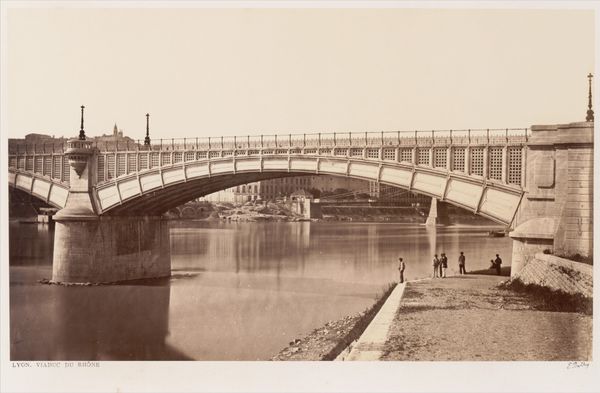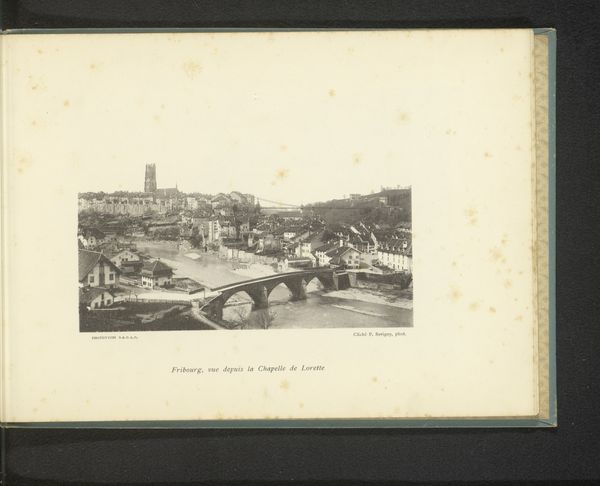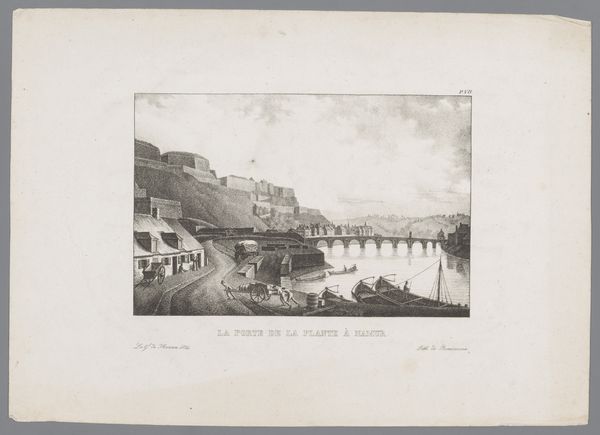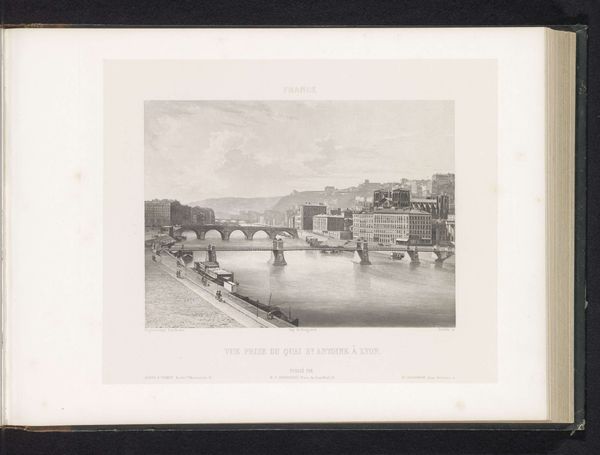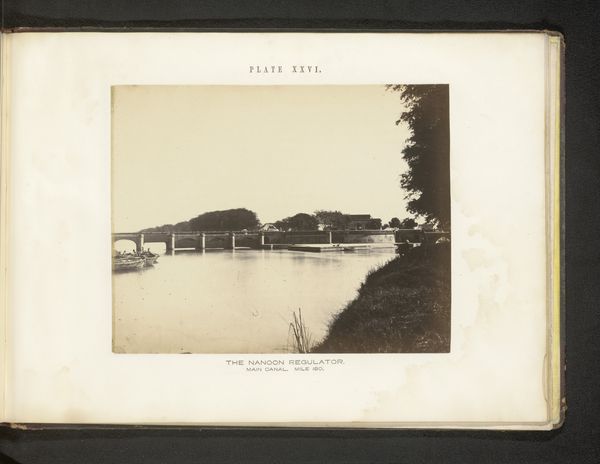
photography
#
landscape
#
photography
#
cityscape
#
realism
Dimensions: height 222 mm, width 84 mm
Copyright: Rijks Museum: Open Domain
Curator: Looking at this piece, “Gezicht op Pont des Anges te Nice,” taken between 1872 and 1874 by Eugène Degand, what strikes you first? Editor: It’s incredibly still. The water's surface mimics a mirror, blurring the line between architecture and its reflection. It presents an idealized perspective of industrial impact. Curator: The stillness might be intentional, enabled by photographic techniques that necessitated long exposure times. This photograph provides valuable insight into 19th-century Nice. It depicts not just the landscape but also the socio-economic shifts of the time. Bridges like these facilitate trade and the movement of people, crucial elements in the city's expansion. What details do you notice about its production as a physical object? Editor: It is indeed remarkable for its technical precision of Realism in capturing light and shadow. As a photographic print, the materiality tells a story itself: from the light-sensitive chemicals used to the specific paper stock. Consider how mass reproduction via photography democratized access to cityscapes, once the purview of painted views marketed towards elites. This allowed a broader consumption of such scenes, further shaping how Nice was perceived and promoted. Curator: I agree. The ability to reproduce and disseminate images widely was indeed revolutionary. Also note the labor that goes into such pieces. People made these bridges, mined the stone, engineered their form. Who did this labor, what were their conditions? Such photographs aestheticize labor's traces while masking it behind the view. Editor: Interesting point, to further that it also reminds us how power structures and industrial progress intersect. Bridges enable expansion, trade, but also solidify political control over movement and access. Considering these aspects can give viewers richer experiences, connecting what is depicted with what’s implied or obscured within an image. Curator: Definitely. Reflecting on these elements allows the image to reveal narratives extending far beyond picturesque scenery. Editor: It prompts us to consider the socio-political ramifications embedded within this supposedly neutral depiction of urban life. Thank you.
Comments
No comments
Be the first to comment and join the conversation on the ultimate creative platform.
